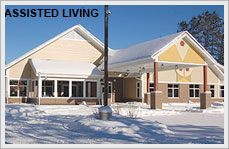Air Monitoring
The FDL Band currently operates three outdoor monitors that measure wet mercury deposition (through precipitation), PM 2.5, and ozone for the Reservation. In the fall, mercury dry deposition is also sampled, through collection of leaf litter samples. The Band has previously monitored dioxin, nitrogen oxides, and acid deposition; we continue to work with our monitoring networks to assess any potential monitoring actions necessary in the future.
The Band collaborates with the Minnesota Pollution Control Agency for data collection and technical support. The outdoor air monitors are located at the Cloquet Forestry Center and at the FDL Resource Management building. In addition, Fond du Lac also hosts a USDA TSCAN (Tribal Soil Climate Analysis Network) site on the reservation to help contribute climate data to the NRCS climate information network.
Minneapolis-St. Paul Real-Time Air Quality Reporting
MPCA Current Air Quality Conditions
The air on the reservation is considered in Attainment for all criteria air pollutants.

Clean Air Act
The Clean Air Act is the law that defines EPA's responsibilities for protecting and improving the nation's air quality and the stratospheric ozone layer.
Clean Air Act Overview
The Plain English Guide to the Clean Air Act
Criteria Air Pollutants:
Criteria air pollutants have direct short and long term effects on human health and the environment. Use the menu below for more information.
Carbon monoxide (CO, 10 mg/m3) is a colorless, odorless, poisonous gas that is released into the air when carbon in fuels doesn't burn completely. It comes from vehicle emissions (60%), factories, industrial boilers, house furnaces, and almost anywhere petroleum fuel is consumed.
Health and Environmental Effects:
Carbon monoxide becomes dangerous when people inhale excessive amounts in the air. Carbon monoxide enters the bloodstream and reduces the amount of oxygen that reaches vital tissues and organs.
Lead (Pb) Naturally occurring lead in our atmosphere is basically harmless. However, in some areas of the country, there are unnaturally high concentrations of lead in the air, soil, and water from human-induced sources.
Health and Environmental Effects:
People become exposed to lead by breathing air with high lead concentrations or by ingesting food, water, paint, soil, or dust containing lead. Children are especially susceptible to lead poisoning because it takes smaller amounts to damage their bodies than it does for adults, and children are more likely to put dirt, paint chips, and other lead-based materials in their mouths. Once lead is in the body, it accumulates in the blood, bones, and soft tissue, causing damage to the kidneys, liver, and central nervous system. Low doses of lead in children can cause central nervous system damage and slowed growth.
Nitrogen Dioxide (NO2) Nitrogen dioxide belongs to a family of gases called nitrogen oxides (NOx). Burning fuel at high temperatures in motor vehicles, electric utilities, and industrial boilers releases nitrogen dioxide into the air.
Health and Environmental Effects:
Prolonged exposure to nitrogen dioxide can irritate the lungs and lower a person's resistance to respiratory infections such as influenza. Continued exposure to high concentrations of nitrogen dioxide may result in a greater number of acute respiratory illnesses in children.
The brownish gas reacts with moisture in the air to form nitric acid, which can corrode buildings and monuments, and toxic organic nitrates, which contribute to acid rain and the acidification of lakes, rivers, and streams. Nitrogen dioxide also plays a major role in producing ground-level ozone, or smog.
Ozone (O3) Ground-level ozone (the primary ingredient in smog) is unique among the criteria pollutants because it is not released directly into the atmosphere. Nitrogen oxides and volatile organic compounds (VOC) are gases that are released into the air through gasoline vapors; chemical solvents; fossil fuel combustion; consumer products such as paint and coatings, solvents and degreasers, and glues or adhesives; and industrial facilities. Forest ecosystems also release significant quantities of VOCs. Once in the air, these gases react with sunlight to form ozone.
Health and Environmental Effects:
High concentrations of ground-level ozone are a major human and environmental health concern. Scientific evidence indicates that ground-level ozone affects not only people with impaired respiratory systems (such as asthmatics), but also healthy adults and children. Ozone causes irritation, congestion, and swelling in the lungs, along with symptoms such as coughing and chest pain. Experiments have shown that repeated exposure to high levels of ozone for several months or more can produce permanent structural damage in the lungs. High ozone concentrations also cause damage to the leaves of plants, resulting in the loss of agricultural crop yields and forest ecosystems. Many of the chemicals that cause ground-level ozone also contribute to other health effects, including cancer, and tissue and organ damage.
Ozone occurs naturally in the stratosphere and is produced and destroyed at a constant rate. This "good" ozone is gradually being destroyed by chemicals such as chlorofluorocarbons (CFCs), halons, and other ozone-depleting agents used in coolants, foaming agents, fire extinguishers, solvents, and aerosols.
These materials break down in the stratosphere to form chlorine and bromine molecules. One chlorine or bromine molecule can destroy 100,000 ozone molecules, so ozone is currently being destroyed much more quickly than nature can replace it. It sometimes takes these ozone-depleting chemicals years to reach the stratosphere. Substances released into the air today will contribute to ozone destruction well into the future.
Nitric oxide (NO) emitted from fossil-fuel-fired boilers, automobiles, trucks, and other fuel burning emission sources is rapidly converted to nitrogen dioxide (NO2) due to photochemically initiated reactions. The formation of nitrogen dioxide further stimulates the photochemical smog-forming reactions because nitrogen dioxide is very efficient at absorbing sunlight.
Sulfur Dioxide (SO2) Sulfur dioxide, a colorless, non-flammable, non-explosive gas, belongs to a family of gases called sulfur oxides (SOx). High-temperature burning processes like smelting, oil refining, and power generation create sulfur dioxide when they burn sulfur-containing fuels, such as coals, natural gases, and oils.
Health and Environmental Effects:
Illnesses associated with exposure to high concentrations of sulfur dioxide include chronic lung diseases such as bronchitis and emphysema. Children, seniors, and people with asthma are most susceptible to adverse health effects associated with exposure to sulfur dioxide. Sulfur oxides also contribute to acid rain, acidification of lakes and streams, accelerated corrosion of buildings and monuments, and reduced visibility.
Particulate Matter (PM2.5: 15 µg/m3 and PM10: 150 µg/m3) The term particulate matter refers to tiny liquid or solid particles in the air. These particles can be released directly into the air from many different sources. Like ozone, particulate matter can also form in the atmosphere when gaseous pollutants, such as sulfur dioxide and nitrogen oxides, react with sunlight to create fine particles; therefore, their chemical and physical compositions vary widely.
The size of particulate matter suspended in the air ranges from less than 0.1 micron in diameter up to 50 microns. There are 25,400 microns to 1 inch, or one-seventh the width of a human hair. Particles larger than 50 microns in diameter are too heavy to stay suspended in the air for long periods—they fall very close to their source before people can inhale dangerous amounts. Particles less than 2.5 microns in diameter, which are easily inhaled deep within the lung system, have the greatest effect on human health.
Burning processes are the most common sources of particulate matter—fly ash (from power plants), carbon black (from gasoline and diesel engines), and soot (from slash burning, forest fires, fireplaces, and wood stoves). Particles between 2.5 and 10 microns are usually associated with fugitive dust from wind-blown sand and dirt from roadways, fields, and construction sites.
Health and Environmental Effects:
In 1987, EPA tightened the general particulate standard with a standard to target smaller, more harmful particles with a diameter of 10 microns or less (PM-10).
In 1997, EPA added an air quality standard for particles with a diameter of 2.5 microns or less (PM-2.5). These "fine particulates" are easily inhaled and can cause tissue damage, emphysema, bronchitis, and cardiovascular complications. Children, seniors, and individuals with pre-existing respiratory diseases are most susceptible to these health risks. Any secondary particulate formation is a major cause of reduced visibility and can produce acid rain.








